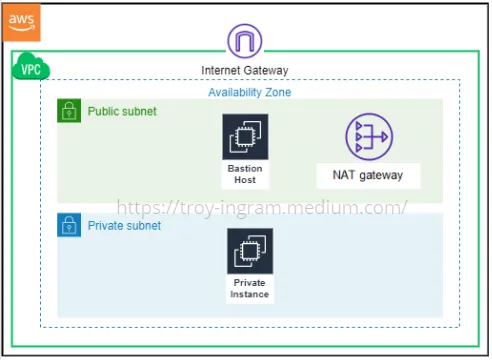
What Is Cloud Migration to AWS?
An AWS cloud migration refers to the process of moving an organization's digital assets such as applications, data, and infrastructure from on-premises or other cloud providers to Amazon Web Services (AWS) cloud platform. Migrating to AWS involves planning, assessment, and execution of the migration of workloads, data, and applications.
AWS offers various migration tools, services, and solutions to enable a seamless migration process, including Database Migration Service (DMS), Migration Hub, Server Migration Service (SMS), and AWS Snowball. Cloud migration to AWS can provide organizations with the benefits of scalability, security, cost savings, and agility. However, the migration process requires carefully considering the organization's resources, goals, and needs to ensure a successful transition to the AWS cloud.
What Are the Benefits of Migration to AWS?
Migrating to AWS can offer numerous benefits for businesses, including:
- Scalability: AWS provides the ability to scale computing resources up or down based on demand, allowing businesses to quickly adapt to changing requirements without having to invest in additional infrastructure.
- Cost savings: By leveraging AWS, businesses can save on infrastructure costs by only paying for the resources they use. AWS also offers cost optimization tools to help businesses identify areas where they can save money.
- Security: AWS offers a range of security tools and services to help businesses protect their data and applications, including encryption, network security, and identity and access management.
- Reliability: AWS provides high availability and redundancy across its data centers, ensuring that applications remain available even in the event of a failure.
- Flexibility: AWS offers a wide range of services and tools to meet the needs of different workloads, including databases, storage, machine learning, and more. Amazon services integrate with all popular CI/CD tools and thus fit into existing development workflows.
- Innovation: AWS offers a constantly evolving set of services and features, enabling businesses to innovate and stay ahead of their competition.
- Global reach: AWS has a global presence, with data centers located in multiple regions around the world, enabling businesses to easily expand their operations and reach new customers.
AWS Migration Tools and Services
AWS Migration Hub
AWS Migration Hub is a service that enables businesses to track and monitor the progress of their application migration to AWS. The service provides a single location to view and track the status of multiple migrations, helping businesses to plan and execute large-scale migrations with ease.
Migration Hub also provides a central dashboard for tracking the progress of an application's migration across multiple AWS-provided or partner solutions, making it easier for businesses to manage their migration projects. With AWS Migration Hub, businesses can gain visibility into their migration portfolio and streamline their migration process.
AWS Database Migration Service
AWS Database Migration Service (DMS) is a fully-managed cloud service that helps businesses migrate their databases to AWS safely and easily. DMS supports both homogeneous and heterogeneous migrations and can migrate databases from on-premises, cloud, or hybrid environments.
DMS can also perform ongoing replication to keep the target database in sync with the source database, minimizing downtime during the migration process. AWS DMS supports a wide range of database engines, including MySQL, Oracle, SQL Server, PostgreSQL, MongoDB, and more. The service is highly scalable and offers a simple, web-based interface to manage database migrations.
AWS Application Migration Service
AWS Application Migration Service (AWS MGN) is a fully-managed service that helps businesses to migrate their applications from on-premises to AWS with minimal downtime. It automates the application migration process, reducing the risk of errors and speeding up the time to migrate. The service supports a wide range of applications and can migrate both virtual and physical servers to AWS.
AWS MGN replicates the source application environment to AWS, allowing businesses to perform a seamless migration with minimal disruption to operations. The service also provides real-time monitoring and reporting, allowing businesses to track the progress of their migration and quickly identify any issues that may arise.
Best Practices for Migrating to AWS
To achieve a smooth migration to AWS, it is essential to follow best practices that can help minimize risks, reduce downtime, and optimize the cloud environment.
Provide Adequate Training
Migrating to AWS may require changes to existing processes, tools, and workflows. As such, it is essential to train team members on how to use the new tools and processes to avoid confusion and ensure a smooth transition. AWS provides various training resources, including classroom training, webinars, and online courses, that businesses can use to train their teams on how to use AWS effectively.
Start with Small, Practical Migrations
Starting with small migrations can help businesses to identify and mitigate potential issues before scaling up to larger migrations. This approach allows businesses to test their migration plan, identify any gaps in their process, and make necessary adjustments before moving more significant workloads to AWS. Small migrations also enable businesses to build confidence in the migration process, achieve success early, and reduce the risk of significant disruptions to operations.
Retire Old Applications Early in the Migration Process
Determining which applications should be retired sooner can help businesses to simplify the migration process and reduce cloud costs. The cloud migration strategy should include prioritized migration steps, with some applications migrated first, some later, and some not at all.
By decommissioning applications that are no longer needed, businesses can avoid migrating unnecessary data and infrastructure, reducing the time and resources required for the migration process. Retiring old applications also reduces the number of applications that need to be managed and monitored, simplifying the cloud environment.
Leverage Automation
Automation can help businesses to reduce the time and resources required to migrate to AWS. Automating repetitive tasks, such as provisioning infrastructure, configuring security settings, and testing applications, can help businesses to streamline the migration process, reduce the risk of errors, and improve the consistency of their migration.
AWS provides various automation tools, including AWS CloudFormation, AWS Elastic Beanstalk, and AWS OpsWorks, that businesses can use to automate their migration processes.
Implement Post-Migration Monitoring
Continuous improvement is essential for optimizing the cloud environment after migration. Businesses should monitor their AWS environment regularly to identify areas for improvement, such as optimizing performance, reducing costs, and improving security. AWS provides various monitoring and analytics tools, such as AWS CloudWatch and AWS Trusted Advisor, that businesses can use to monitor their AWS environment and identify opportunities for improvement.
Conclusion
Migrating to AWS provides businesses with various benefits, including scalability, security, cost savings, and agility. However, to ensure a successful transition to the AWS cloud, businesses must follow best practices that can help minimize risks, reduce downtime, and optimize the cloud environment.
Tools such as AWS Database Migration Service, AWS Application Migration Service, AWS Migration Hub, and AWS Managed Services can simplify the migration process and help businesses to leverage the full benefits of the AWS cloud.
By training team members to use the new processes and tools, starting with small migrations before expanding, retiring old applications early in the migration process, automating repetitive tasks, and continuously improving the environment with post-migration monitoring, businesses can achieve a smooth migration to AWS and optimize their cloud environment after migration. With careful planning and execution, businesses can take advantage of the benefits of cloud migration to AWS and position themselves for success in the digital age.





